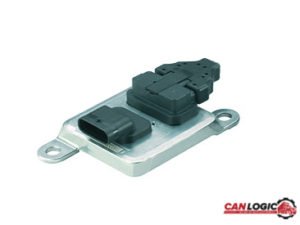DTC Cleaner, also known as DTC Eraser, Limp mode reset tool, OBD error code eraser or OBD limp mode reset tool, is irreplaceable bit of kit if you get stuck in limp mode. No other tool is that easy to use or that quick to bypass limp mode and instantly return your truck to full power. In this article we will explain how does it work and how it can benefit you in limp mode emergency.
Every truck is equipped with a computer known as ECU. This is vehicle’s main computer, which receives signals from all the different components of the truck and controls all systems accordingly. Once a particular fault occurs appropriate signal is sent to the ECU , which in turn triggers limp mode. Problems which cause limp mode are usually associated with vehicle’s emission system, such as SCR faults, NOX faults, DPF faults.., but can also be caused by faulty engine sensors/components/wiring, transmission issues, dysfunctional brakes and clutch, or even low fluid levels…
From our experience, most common limp mode causes are faults/malfunctions within the emissions system. In EURO 5 standard trucks emission system components are NOX sensors and SCR (adblue) system. Should anything within the emission system break down, limp mode will be triggered. Limp mode affect on EURO 5 trucks is relatively mild as power is only restricted by a fraction, however this is not the case with EURO 6 trucks. Once limp mode kicks in EURO 6 trucks will be limited to 20MPH speed, which makes them very difficult to operate. One thing if your lorry is empty, but a completely different story if it is fully loaded. You will struggle even to get it to a safe place, never mind getting it back to your base or to your destination..
So what can you do to temporary reset/bypass limp mode allowing you to get to a safe location, back to the base or just to finish your trip safely. The answer is simple, Can Smart DTC cleaner will reset limp mode in your truck and get your truck back to full power within a minute! This handheld device is small enough to fit on your palm and requires no batteries and no skills to use. All you have to do is turn ignition on, plug device into OBD II port, wait for about 30-40 seconds and unplug/turn ignition off. That is it, your truck will no longer be in limp mode! This is only a temporary fix, it will not fix the problem with your truck, it will simply reset limp mode so that the vehicle can be operated on full power as normal. This will not last forever, limp mode will come back eventually, things like what faults are active and how long have they been active for will determine how long will limp mode reset last. In any case, you will always be able to reset limp mode with Can Smart DTC Cleaner, and you can use it as many times as you need to.
Being the original inventor of this product and also the manufacturer, allows us to offer best, most advanced product of its kind available on the market today as well as very competitive pricing. Don’t risk being stuck in limp mode, please visit our DTC Cleaner shop at www.truckhelp.co.uk/shop or contact us for a trade quote for bulk orders.

 What is a NOx sensor?
What is a NOx sensor?